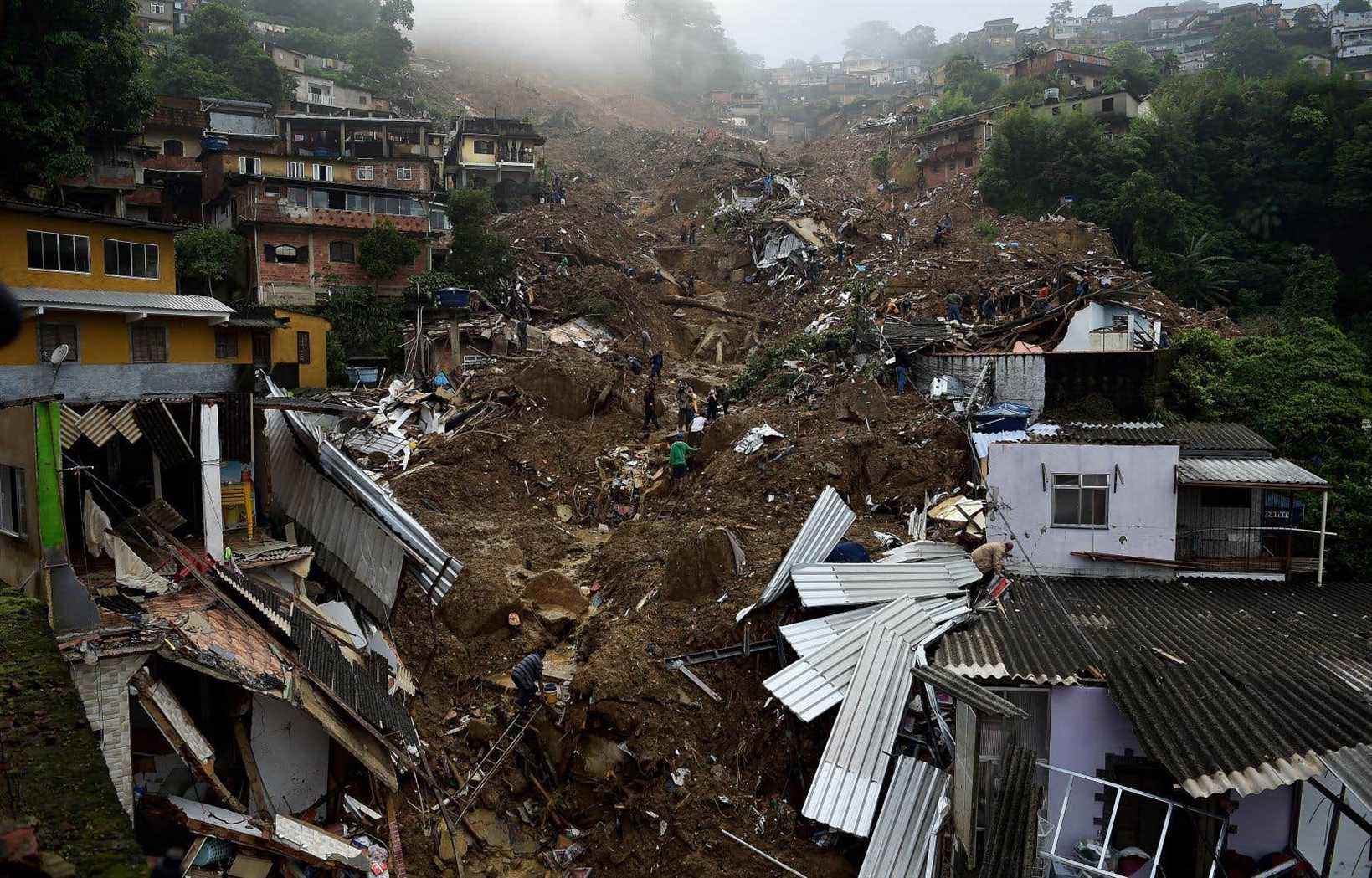At least 78 people have died in floods and landslides caused by the worst rains in nearly a century in the tourist town of Petropolis, near Rio de Janeiro, authorities in the region revealed on Wednesday.
The toll, which is provisional, has steadily increased hour by hour in the aftermath of torrential rains which have transformed the streets of the center into rivers of mud, flattened houses and overturned dozens of cars in this winter season. particularly deadly rains in Brazil.
“We now have 78 confirmed deaths and 21 people have been saved,” Rio de Janeiro state governor Claudio Castro told a news conference, referring to “the worst rains since 1932.”
The balance sheet is likely to increase, the number of missing in the locality of 300,000 inhabitants located 60 km north of Rio, in the south-east of Brazil, not having yet been established. The picturesque city received more rain in a few hours on Tuesday evening than the average for an entire month of February, according to the meteorological agency MetSul.
Brazil has been hit in this rainy season by particularly severe rainfall – in the states of Bahia (northeast), Minas Gerais and Sao Paulo (southeast) – which experts have linked to global warming.
With global warming, the risk of heavy rainfall events increases, according to scientists. These rains, associated in particular in Brazil with an often wild urbanization, favor floods and deadly landslides.
Destroyed houses
More than 180 firefighters were in Petropolis, along with some 400 military personnel, scouring the muddy earth in this mountain town that was the summer residence of the former imperial court fleeing Rio’s heatwave in the 19th century.
The most affected neighborhood is Alto da Serra, a hill that many families descended on Wednesday crying, carrying the meager belongings they were able to save, AFP journalists noted.
“All the people on the street say it looks like a war zone,” said Wendel Pio Lourenço, a 24-year-old resident who has been helping with the rescue since the day before.
“I found a little girl engulfed in the mud”, says the young man, who carries a television set towards a church serving as a refuge. In total, some 300 inhabitants were collected, often schools.
The mud buried houses and torn sheet metal roofs littered the ground everywhere.
Cars, swept away by rivers of mud, found themselves with their wheels in the air or piled up on other vehicles. Shops were inundated by the water which rushed down the streets of the historic center of Petropolis.
On Wednesday, almost all the shops in the city center were closed, with the exception of pharmacies.
“State of Calamity”
The Church of Saint-Antoine, near the most affected area, has opened its doors to some 150 residents who have abandoned houses that have already been destroyed or are in danger of collapsing.
“Most of those who come here have lost relatives. It’s a difficult situation,” Father Celestino, the parish priest, told AFP.
Severe bouts of rain threatened the region again before the end of the week, according to meteorology. “I don’t want to see any more rain in my life,” said Jeronimo Leonardo, 47, who fled his house threatening to collapse.
The town hall of Petropolis declared a “state of calamity” and a three-day mourning was decreed.
From Moscow, where he is visiting – and before going to Petropolis on Friday – President Jair Bolsonaro thanked his Russian counterpart Vladimir Putin “for his solidarity with the population”. He wished that “God comforts” those who have been bereaved by “this disaster”.
Petropolis, with its opulent old houses, has become a destination that attracts a large number of tourists in search of history and hiking in verdant nature and a temperate climate.
The Austrian writer Stefan Zweig took refuge there to flee the Nazi regime and ended his life there in 1942.
In January 2011, more than 900 people died due to flooding and landslides in a vast region near Rio including Petropolis and the neighboring towns of Nova Friburgo, Itaipava and Teresopolis.
